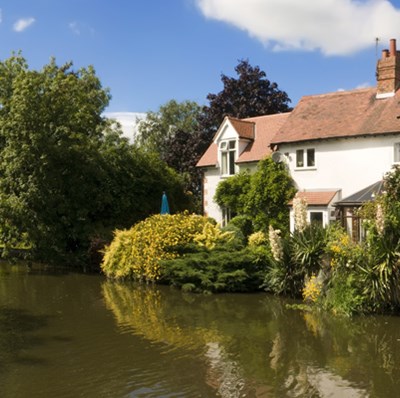Flood Risk Insurance
Get a quote online or by phone for cover for properties that are a flood risk or have been flooded in the past.
- Specialist property insurance team
- Theft cover for flood risk properties
- Online support

One of the UK's leading independent insurance brokers
Why choose flood risk insurance with Towergate?

Specialist property insurance team
If you have any questions about our policy or if you need to make a change, our friendly customer service team is available Monday to Friday, 9am to 5:30pm.

Dedicated claims team
Our friendly and helpful claims team are available 5 days a week, 8:30am - 5:30pm.

Spread your flood risk insurance cost
You can pay for your policy via monthly Direct Debit to manage the cost.

Theft cover for flood risk properties
You will be covered for theft as long as there is evidence of forcible entry or exit.
About flood risk insurance

Alternative accommodation cover
If your home becomes uninhabitable and the claim for damage is covered, you’ll have cover in place towards the cost of staying somewhere else.

Contents cover for flood risk properties
We will cover your general contents as standard and if you want any specific valuables added on to the policy just let us know so we can make sure they are included.

Accidental damage cover
As part of your cover, accidental damage for fixed glass, sanitary fixtures and fittings and electrical equipment is included as standard.

Home emergency cover
Our flood risk cover through your specialist home insurance policy gives you the option to add a 24-hour contact number for home emergencies, so you can call and have someone carry out repairs or secure the property straightaway. This a summary of the key features of the policy. For details of the terms and conditions applicable, please refer to the Insurance Product Information Document and policy wording, which are available during the quotation process.
When you need to make a claim, we'll guide you through the process and get your claim settled as quickly as possible.
- Find your insurance documents and make sure you have all your information at hand, including your policy number.
- Call the claims team on 0345 074 4760 and explain exactly what happened.
- Provide photos if requested to help us understand what happened as quickly as we can.

Ready to get covered?
- Fill in our online quote form or call us
- Purchase your policy
- Relax - You're covered!
Flood risk insurance FAQs
You can choose to add a voluntary excess from £50 to £450. If you go for the higher amount, this will reduce your premium. Certain types of constructions, including properties at risk of flooding, have a higher excess - such as flat-roofed properties. For more information speak to one of our sales advisors on 0344 736 0088.
This depends on your circumstances and the type of property you want to insure. The quickest way to find out is to speak to one of our advisors on 0344 892 1750.
Please call us or notify us in writing with the reason for cancellation and state the date from which you need cover to cease. Remember, if your policy is in more than one name, all policyholders will need to sign the letter. If you have any other queries, please don't hesitate to contact the customer services team on 0344 892 1750.
0344 892 1750
Contact info – Renew
0344 892 1750
Contact info - Claim
You must take all reasonable steps to prevent accidents, loss or damage and must maintain the property insured in sound condition and good repair. If you have a flat roof, a professional builder or roofer will need to visit your property every eight years to inspect it and any necessary repairs should be carried out.
You can pay by credit card, debit card or monthly direct debit.
Flood risk insurance articles and guides
21/07/2017
A Simple Guide to Home Insurance
Buying home insurance needn't be as complicated as you think. Get to grips with the ins and outs of what makes up a home insurance policy.
Read more01/02/2013
Non Standard Property Explained
Everything you need to know about non-standard property insurance from our series of specialist property insurance guides.
Read more28/06/2024
Does your property need specialist home insurance?
Phil Spencer (Location, Location, Location) discusses non-standard home insurance.
Read more09/05/2022
Rightsize Your Insurance
When you insure a building, it is your responsibility to decide how much to insure it for. Your broker or insurer cannot tell you this amount.
Read more10/10/2014
Getting Insurance in a Flood Risk Area
If your property is in a flood risk area, it can be tricky to get insured. Learn how to assess the risk in your area and find a suitable policy.
Read more31/07/2024
Protecting Your Home From Fire and Flood Risks
Read a few quick tips to protect your home from the risk of fire and flood damage.
Read more




